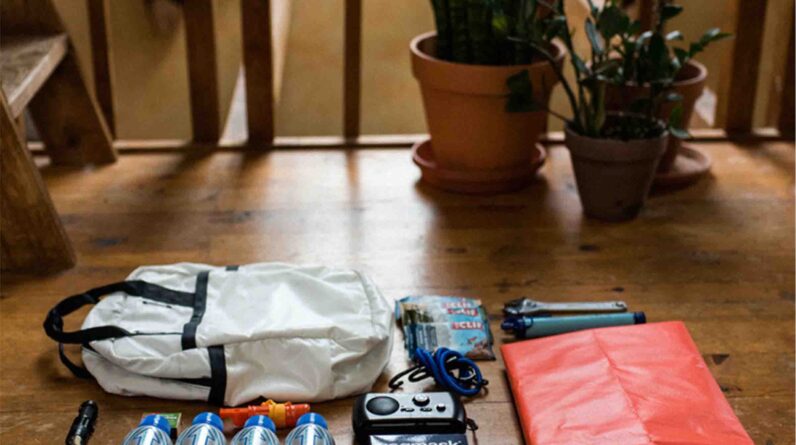
In the search for eco-friendly and sustainable options, finding environmentally responsible choices for emergency kit supplies has become increasingly important. With the rise in natural disasters and emergency situations, it is crucial to be prepared, but it is also important to consider the impact our choices have on the environment. From renewable energy sources to biodegradable materials, this article explores the possibilities and provides recommendations for making environmentally conscious decisions when assembling your emergency kit.

This image is property of goingzerowaste.com.
1. Water
Water is essential for survival, especially during emergencies. When assembling your emergency kit, it’s important to consider the water provisions. Here are some sustainable options you can include:
1.1. Water containers
Investing in reusable water containers is a great way to reduce waste and ensure a constant supply of clean water. Look for containers made from sustainable materials like stainless steel or BPA-free plastic. These containers can be easily refilled and will withstand the rigors of emergency situations.
1.2. Water purification tablets
In situations where clean water might not be readily available, water purification tablets are a reliable option. These tablets effectively eliminate harmful bacteria and viruses, making water safe for consumption. Opt for tablets that are eco-friendly and meet recognized safety standards.
1.3. Water filters
Water filters are another effective means of ensuring safe drinking water during emergencies. Look for filters that are portable, lightweight, and easy to use. Consider models that utilize sustainable filter materials, such as activated charcoal or ceramic, which can be easily replaced and are less harmful to the environment.
2. Food
Proper nutrition is crucial during emergencies, and choosing environmentally responsible food options can make a significant difference. Here are some sustainable choices for your emergency kit:
2.1. Non-perishable, plant-based options
When selecting emergency food supplies, prioritize non-perishable plant-based options. These can include dehydrated fruits and vegetables, nuts, seeds, and protein-rich grains. Plant-based foods have a lower carbon footprint compared to animal-based products, making them more environmentally friendly.
2.2. Locally sourced or organic food
Whenever possible, opt for locally sourced or organic food for your emergency kit. Choosing locally sourced food reduces transportation emissions and supports local farmers. Organic options, free from harmful pesticides and chemicals, are better for your health and the environment.
2.3. Sustainable packaging
Consider food items that come in sustainable packaging for your emergency kit. Look for brands that use recyclable or compostable materials. Avoid excessive packaging and single-use plastics. By prioritizing sustainable packaging, you can minimize waste and its negative impact on the environment.
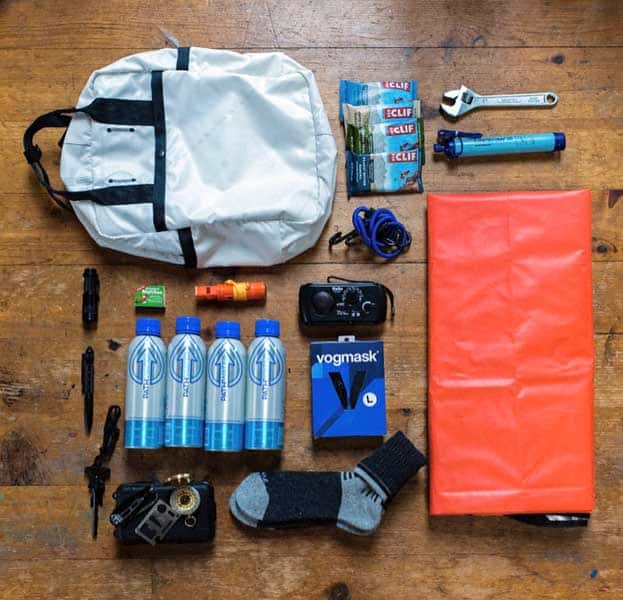
This image is property of goingzerowaste.com.
3. Lighting
During emergencies, reliable lighting is essential for safety and comfort. Here are some eco-friendly lighting options to include in your emergency kit:
3.1. Solar-powered lanterns
Solar-powered lanterns harness the energy of the sun to provide bright and sustainable lighting. These lanterns charge during the day and can provide illumination throughout the night. Look for models with efficient solar panels and long-lasting LED bulbs.
3.2. Rechargeable batteries
Investing in rechargeable batteries is not only cost-effective but also eco-friendly. Opt for rechargeable batteries that can be recharged multiple times and have a longer lifespan. Use a solar-powered battery charger to keep your batteries charged and ready for use during emergencies.
3.3. LED flashlights
LED flashlights are energy-efficient and have a longer lifespan compared to traditional incandescent bulbs. They provide bright illumination while consuming minimal power. Look for flashlights with adjustable brightness settings to conserve energy and maximize their usefulness.
4. Communication
Effective communication is crucial during emergencies to stay informed and receive assistance if needed. Here are some eco-friendly options to include in your emergency kit:
4.1. Hand crank radios
Hand crank radios are a reliable communication tool that requires no batteries or external power sources. They are powered by manual cranking, generating electricity for radio reception. Look for models with additional features like built-in flashlights and USB ports for charging small devices.
4.2. Eco-friendly rechargeable radios
If you prefer a battery-powered radio, consider investing in eco-friendly rechargeable radios. These radios often feature built-in rechargeable batteries and can be charged using a solar-powered charger or a hand-crank generator. They reduce waste from single-use batteries and provide reliable communication.
4.3. Solar-powered chargers
Including a solar-powered charger in your emergency kit is a sustainable way to keep your electronic devices powered. These chargers harness the sun’s energy to charge batteries, smartphones, or other small devices. Look for compact and lightweight models that provide efficient charging capabilities.
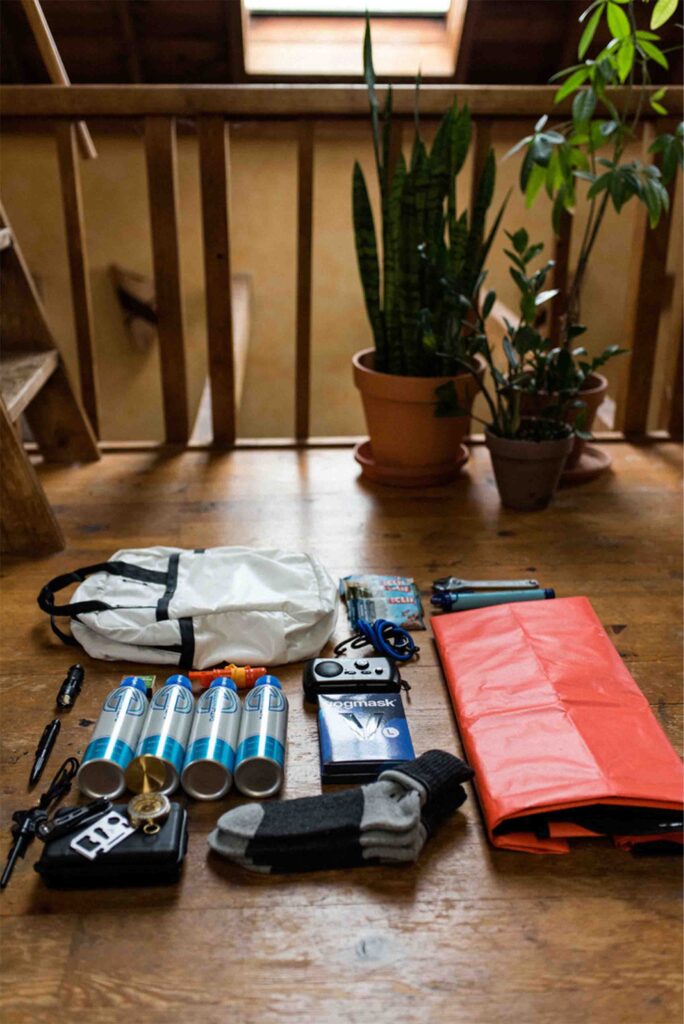
This image is property of goingzerowaste.com.
5. Shelter
Having a reliable shelter during emergencies is vital for protection and comfort. Consider these eco-friendly options for your emergency kit:
5.1. Recycled or sustainable tents
When choosing a tent for your emergency kit, opt for recycled or sustainable materials. Look for tents made from recycled fabrics or those certified by organizations promoting sustainable practices. These tents offer shelter while minimizing their impact on the environment.
5.2. Biodegradable emergency blankets
Including biodegradable emergency blankets in your kit ensures you stay warm while minimizing waste. These blankets are typically made from sustainable materials and will naturally break down over time, reducing their impact on landfills.
5.3. Eco-friendly sleeping bags
Investing in eco-friendly sleeping bags is another way to make your emergency kit more sustainable. Look for sleeping bags made from recycled materials or those sourced from responsible and ethical manufacturers. Consider options with high insulation properties to ensure warmth during harsh conditions.
6. First Aid
Having a well-stocked first aid kit is crucial during emergencies. Consider these environmentally friendly options for your first aid supplies:
6.1. Organic bandages
Choose bandages made from organic or biodegradable materials. These bandages are free from harmful chemicals and typically break down naturally over time, reducing waste. Look for options that are latex-free and hypoallergenic to cater to various needs.
6.2. Natural disinfectants
Opt for natural disinfectants that are free from harsh chemicals commonly found in conventional products. Look for disinfectant sprays or wipes made from plant-based ingredients or those certified as eco-friendly. These options are effective in preventing infection while minimizing environmental harm.
6.3. Eco-friendly cold packs
Include eco-friendly cold packs in your first aid kit. Look for packs made from non-toxic and biodegradable materials. These cold packs can be reused multiple times and are safe for the environment when disposed of properly.
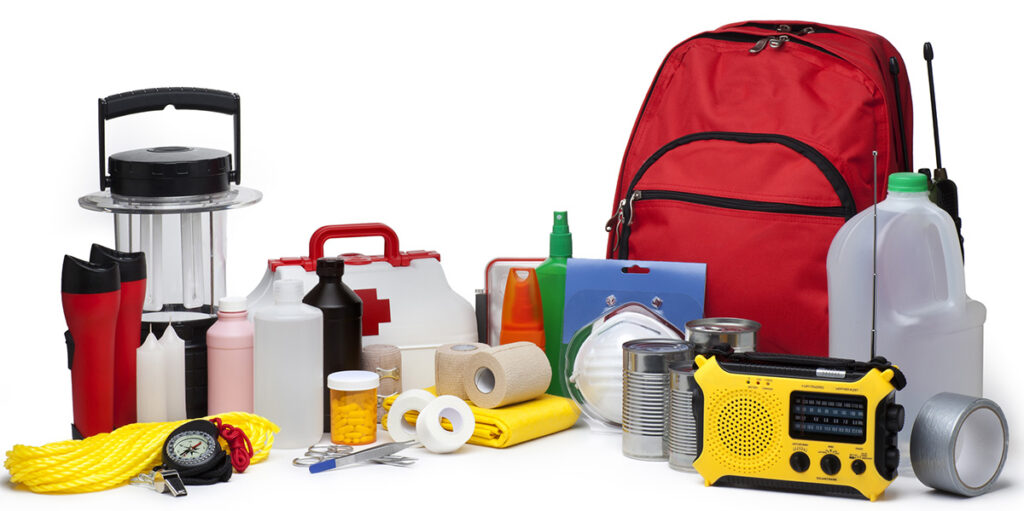
This image is property of www.cdph.ca.gov.
7. Tools
Having reliable tools can greatly assist in emergency situations. Consider these eco-friendly options for your emergency kit:
7.1. Hand tools made from recycled materials
Include hand tools made from recycled materials in your kit. Look for options like multi-tools, pocket knives, or screwdrivers made from repurposed or recycled metal. These tools are durable, functional, and help reduce waste.
7.2. Multi-functional tools
Invest in multi-functional tools that serve multiple purposes, reducing the need for additional tools. Look for options like Swiss army knives or multi-tools with various attachments. These tools are practical, space-saving, and minimize environmental impact.
7.3. Eco-friendly rope and cordage
Choose ropes and cordage made from eco-friendly materials, such as organic cotton or natural fibers. These options are biodegradable and reduce pollution when disposed of properly. Look for ropes that are strong, durable, and suitable for various emergency applications.
8. Sanitation
Maintaining proper sanitation during emergencies is crucial for health and well-being. Consider these eco-friendly options for your emergency kit:
8.1. Biodegradable toiletries
Include biodegradable toiletries in your kit, such as shampoo, soap, and toothpaste. Look for products made from natural ingredients and free from harmful chemicals. These options minimize pollution and negative impacts on ecosystems when used and disposed of properly.
8.2. Compostable toilet paper
Opt for compostable toilet paper made from recycled materials or sustainably sourced paper. These options break down easily in composting systems, reducing waste and environmental impact. Ensure you follow proper guidelines for composting to maximize its eco-friendly benefits.
8.3. Portable bidets
Consider including a portable bidet in your emergency kit. Portable bidets are water-saving alternatives to traditional toilet paper and allow for effective hygiene. Look for models that are compact, lightweight, and easy to use. These bidets help reduce waste and maintain cleanliness during emergencies.
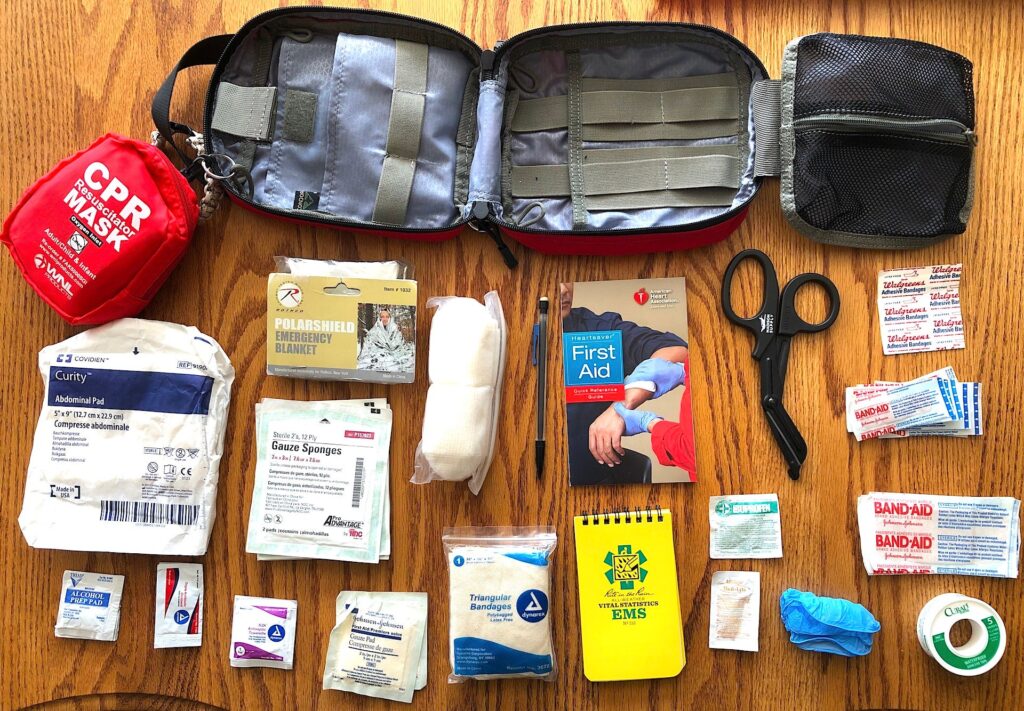
This image is property of taskandpurpose.com.
9. Energy
Having reliable sources of energy during emergencies can be essential for various purposes. Consider these eco-friendly options for your emergency kit:
9.1. Solar-powered generators
Investing in solar-powered generators provides a sustainable source of energy during emergencies. These generators store energy from the sun and can power small devices or appliances. Look for models with efficient charging capabilities and sufficient power output to meet your needs.
9.2. Portable solar panels
Including portable solar panels in your emergency kit allows you to harness the sun’s energy to charge essential devices. Look for lightweight and durable panels that can be easily carried and provide efficient charging. These solar panels ensure a renewable and eco-friendly energy source during emergencies.
9.3. Rechargeable power banks
Consider including rechargeable power banks to ensure a reliable power supply for your devices. Look for power banks with high-capacity batteries and the ability to charge multiple devices simultaneously. Invest in energy-efficient models that can be recharged using solar power or hand-crank generators for sustainability.
10. Transportation
In emergency situations, having reliable transportation options can be crucial for evacuations or accessing essential services. Consider these eco-friendly options for your emergency kit:
10.1. Eco-friendly emergency vehicle kits
Include eco-friendly emergency vehicle kits in your preparation. Look for options that prioritize recyclable or biodegradable materials for items like emergency triangles, safety vests, and reflective tape. These kits ensure safety while minimizing environmental impact.
10.2. Electric bicycles
Investing in electric bicycles as part of your emergency kit provides a sustainable mode of transportation. Electric bicycles have low environmental impact, produce zero emissions, and can cover longer distances compared to regular bicycles. They can be particularly useful when fuel is scarce or unreliable.
10.3. Sustainable fuel options
Consider including sustainable fuel options in your emergency kit, such as bioethanol or biofuel tablets. These fuels provide an alternative to conventional fossil fuels and have a lower carbon footprint. While not as readily available, they can be crucial in situations where traditional fuel sources are scarce.
In conclusion, finding environmentally responsible choices for emergency kit supplies is crucial for minimizing environmental impact and promoting sustainability. By prioritizing options such as reusable water containers, plant-based food, and eco-friendly lighting and communication tools, you can assemble an emergency kit that is both functional and sustainable. Remember to dispose of waste properly and choose products made from recycled or sustainable materials whenever possible. With these eco-friendly choices, you can be prepared for emergencies while also caring for the planet.
